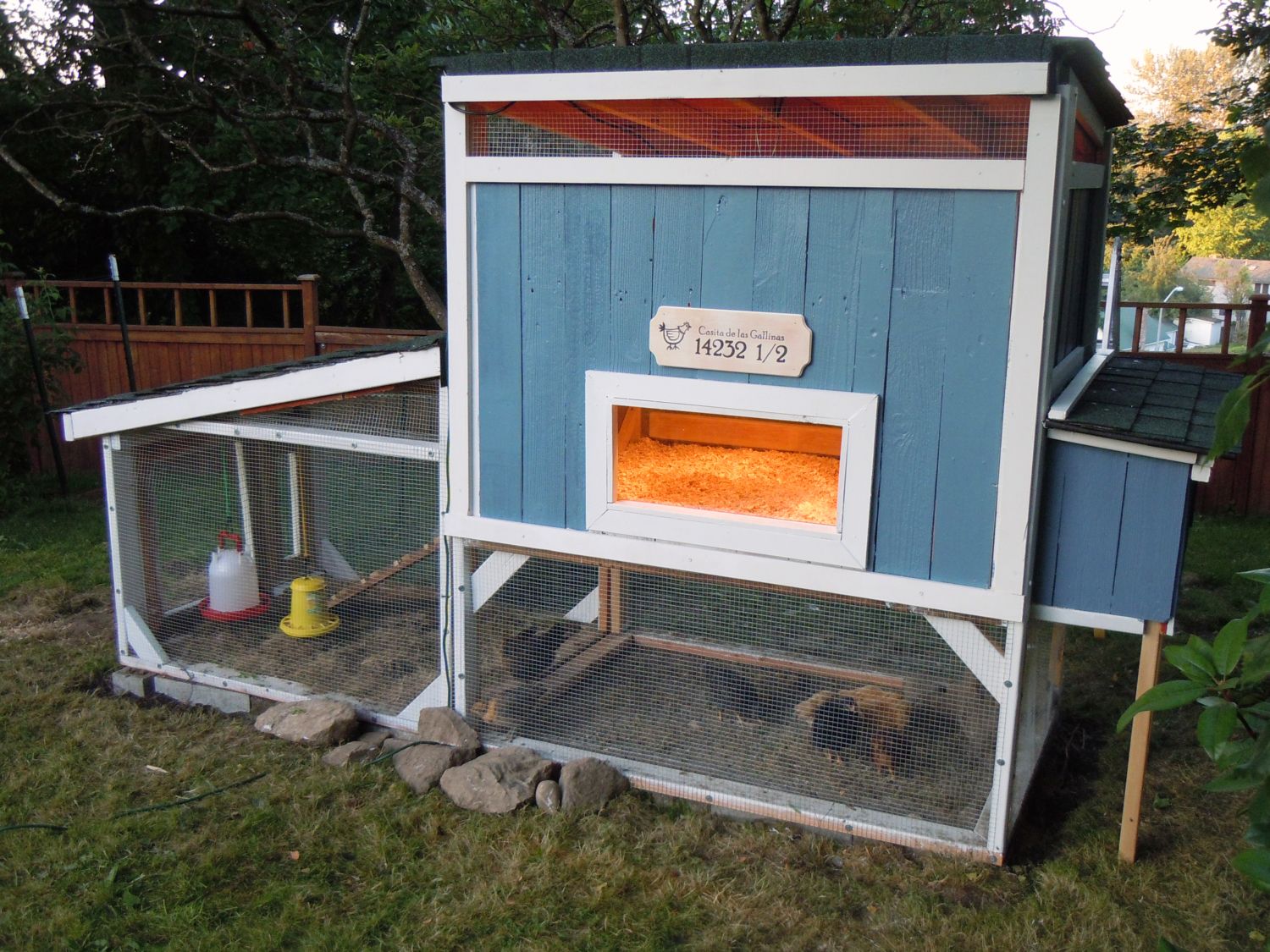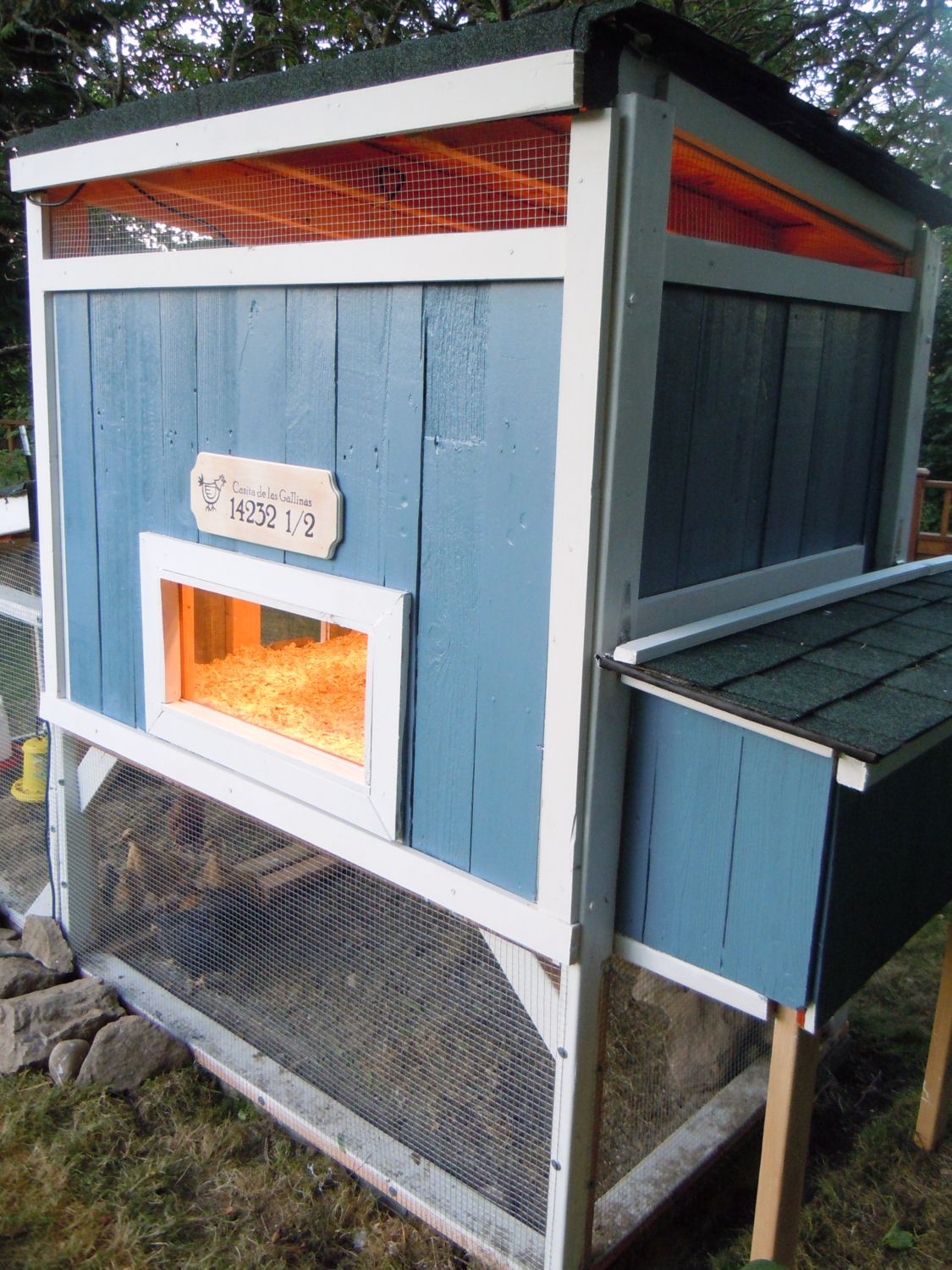Two months of research (mostly lurking on BYC, stealing ideas left and right from so many of you brilliant people), six weeks of construction (mostly during my youngest son's long morning nap, and mostly while wearing my pajamas and slippers), and my coop is complete.
Would you like a tour? Yes? Okay then. Walk on back.

It's a 4'x5' coop elevated 2' off the ground with a sandy area under the coop and a grassy area in the adjacent run. All open areas are covered in 1/2" hardware cloth (so glad I found this place, otherwise I'd have used chicken wire!) secured with screws backed by 1" washers. It's rock solid and tight, so ain't no predators gonna get at my girls! You can't quite tell, but I dug out the ground under the coop 12" deep and laid a double layer of hardware cloth, placed cinderblocks around the perimeter where the base of the coop and run would be, and wrapped the hardware cloth up and around the cinderblocks. Then I added sand/gravel/dirt on one side and replaced the sod I had removed under the other.

The nesting boxes have a hinged lid for egg-gathering.

The entire back side of the coop opens up for easy cleaning and has two locking latches.

The attached run has two padlocked gates on the end. The larger one gives me access to the food and water, and the smaller one will eventually open up to their daytime partial free-range area. I'll worry about building that in the fall once they're full-grown and want more space.

Another valuable piece of information I learned here at BYC is the need for lots of airflow. The coop has ventilation along 3 sides of the roof, all secured with hardware cloth.

'Casita de las Gallinas' means 'Little Hen House' in Spanish. I hope. LOL
And that's my coop! I'd love suggestions for ways to improve it-- this place is such an awesome resource. Thanks for stopping by!
Thanks for stopping by!
Would you like a tour? Yes? Okay then. Walk on back.

It's a 4'x5' coop elevated 2' off the ground with a sandy area under the coop and a grassy area in the adjacent run. All open areas are covered in 1/2" hardware cloth (so glad I found this place, otherwise I'd have used chicken wire!) secured with screws backed by 1" washers. It's rock solid and tight, so ain't no predators gonna get at my girls! You can't quite tell, but I dug out the ground under the coop 12" deep and laid a double layer of hardware cloth, placed cinderblocks around the perimeter where the base of the coop and run would be, and wrapped the hardware cloth up and around the cinderblocks. Then I added sand/gravel/dirt on one side and replaced the sod I had removed under the other.

The nesting boxes have a hinged lid for egg-gathering.

The entire back side of the coop opens up for easy cleaning and has two locking latches.

The attached run has two padlocked gates on the end. The larger one gives me access to the food and water, and the smaller one will eventually open up to their daytime partial free-range area. I'll worry about building that in the fall once they're full-grown and want more space.

Another valuable piece of information I learned here at BYC is the need for lots of airflow. The coop has ventilation along 3 sides of the roof, all secured with hardware cloth.

'Casita de las Gallinas' means 'Little Hen House' in Spanish. I hope. LOL
And that's my coop! I'd love suggestions for ways to improve it-- this place is such an awesome resource.
 Thanks for stopping by!
Thanks for stopping by!
